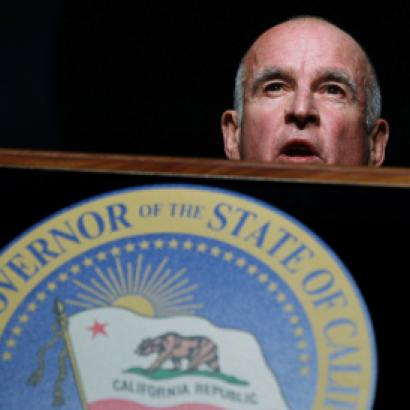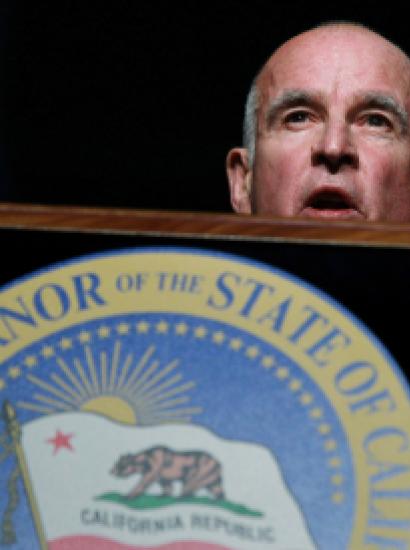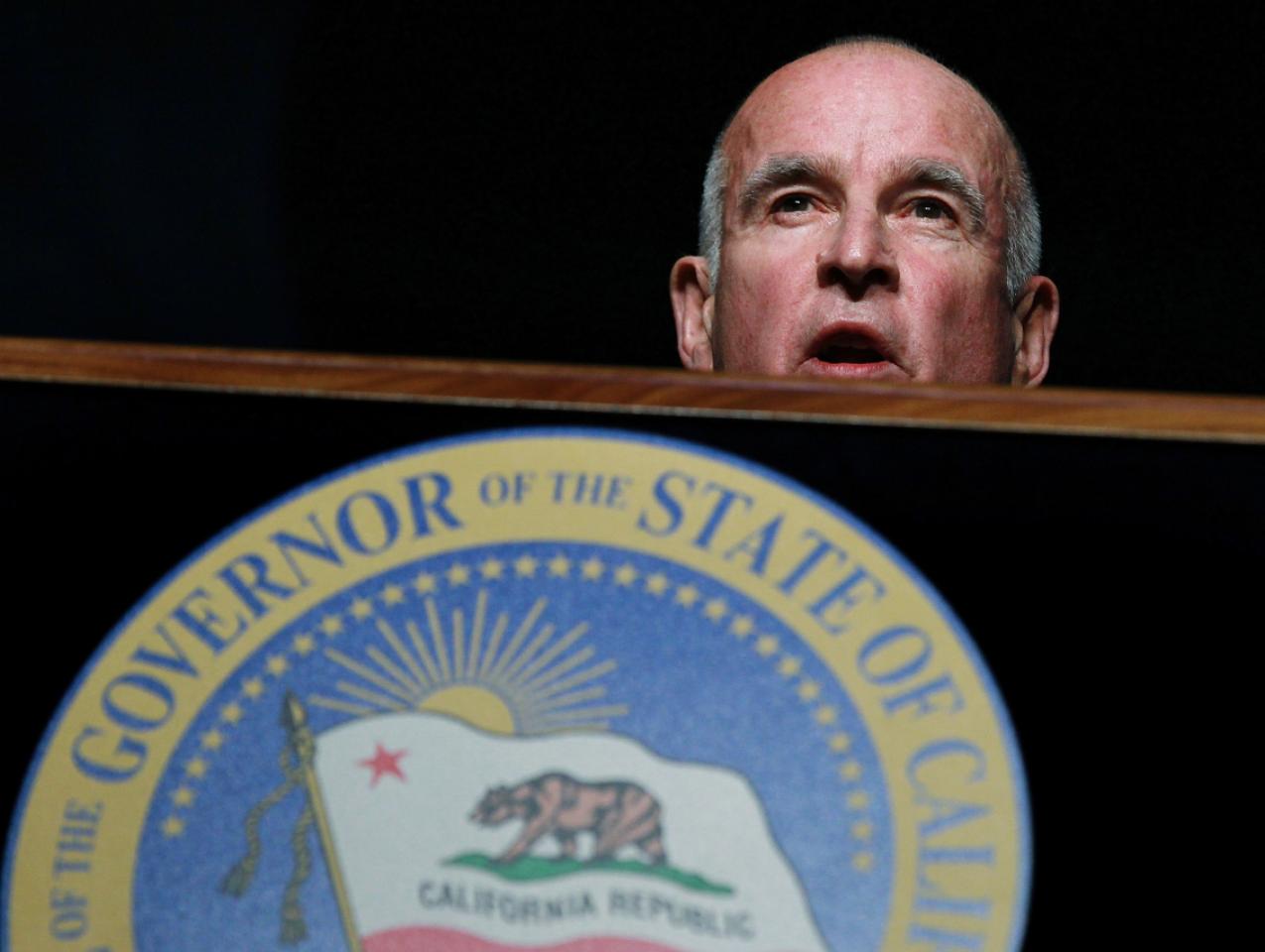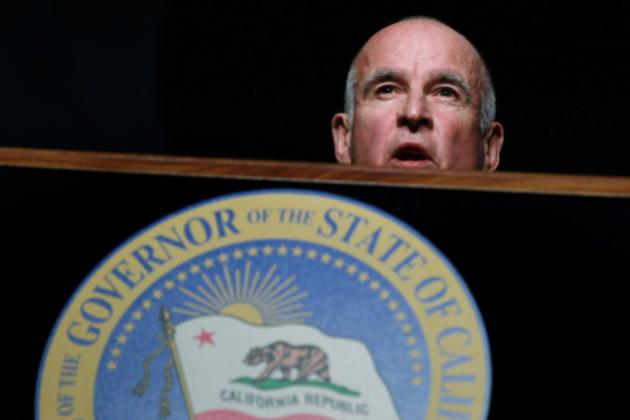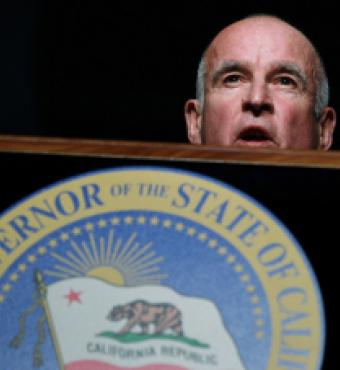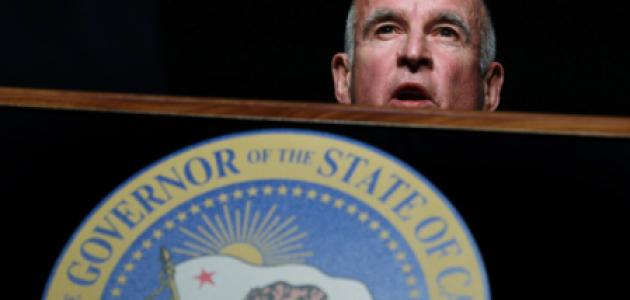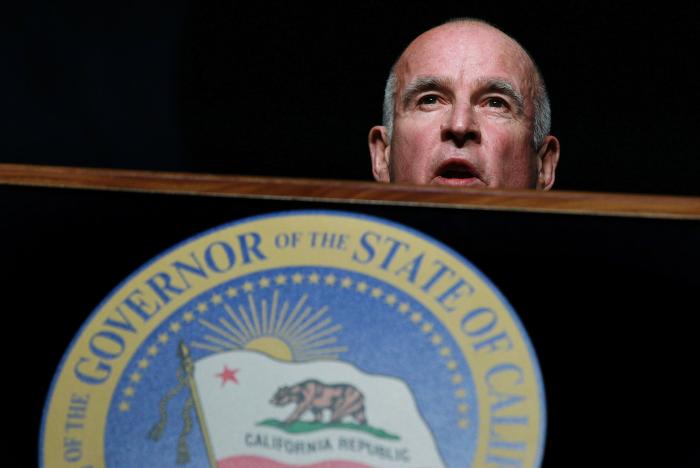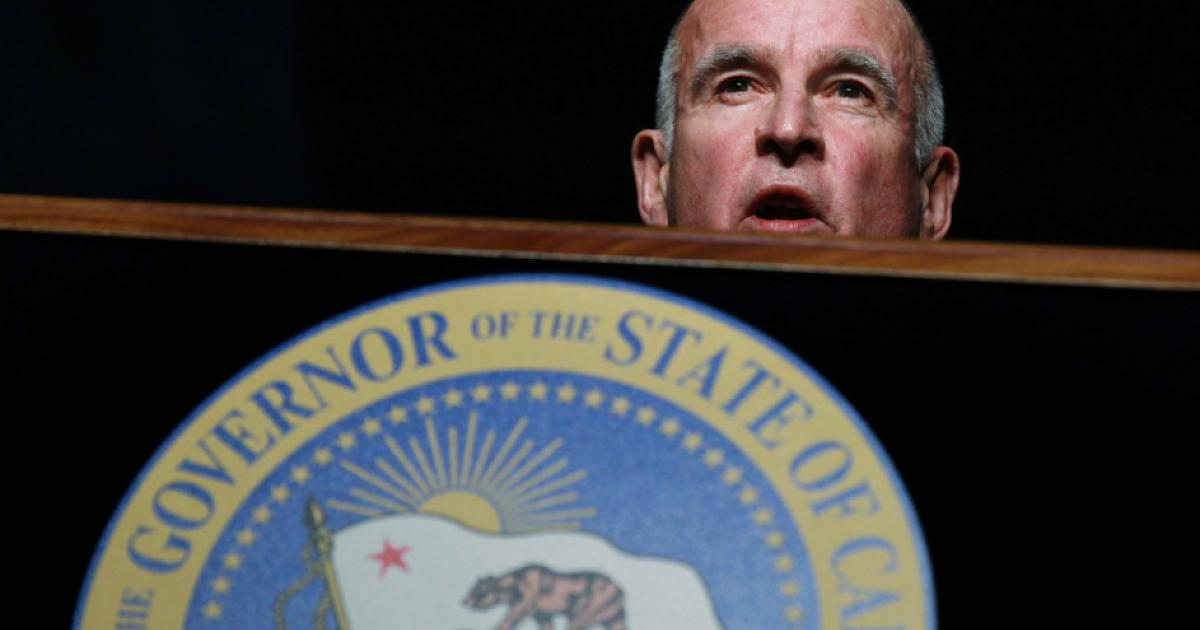California governors don’t make New Year’s resolutions – publicly, at least. The closest they come to vows of self-improvement is the annual State of the Address, delivered every January before a joint session of the State Legislature.
About that governmental rite: I worked on such addresses when I was the chief speechwriter for former California governor Pete Wilson, who oversaw the Golden State for a majority of the 1990s. The address took the better of a month to research, draft, and rehearse. It was delivered as early as possible in the new year so as to get the jump on about thirty other Republicans state executives all swimming in the same lane of welfare reform, lower taxes, class-size reduction, and tougher anticrime laws.
The current California governor is a different animal, to put it mildly, as reflected by his truncated State of the State Addresses these past seven years.
Jerry Brown, entering his sixteenth and final year as California’s chief executive (no one’s served longer), has delivered his addresses in late January and well after other governors’ speeches are popping up on C-SPAN. No concern there about beating his peers to the punch.
In the land of Silicon Valley and beach, Brown’s rhetorical style is jarringly low tech. He forgoes a Teleprompter, rushing through his remarks with his head down, at times stepping on applause lines.
Then there’s the matter of content.
Brown’s addresses have clocked in at about twenty minutes; presidential State of the Union addresses run triple that time. Brevity may be the soul of wit but for not a nation-state with myriad problems. Each time Jerry Brown has stood before the State Legislature this decade, the narrative has been as much what he left out of the rhetorical stew as were the ingredients he chose.
In this, the final year of the Brown era in California politics (Jerry’s father and namesake, the fabled Pat Brown, was first elected governor in 1958 making it a six-decade bookend), there are two questions as to how the son plans to ride off into the sunset:
1. How willing is Brown to slow the state’s leftward tilt?
2. With California sporting a revenue surplus, will Brown engage lawmakers in a showdown over investing versus saving for the inevitable economic turndown?
About the state’s spending: earlier this month, Brown proposed a $190.3 billion budget for the new fiscal year that begins in July (the current budget weighs in at $183 billion). But he also proposed adding to the state’s rainy-day fund and played up the notion of a growth economy’s living on borrowed time. That won’t please lawmakers who have different thoughts on what to do with the surplus (Assembly Democrats want to expand health care for illegal immigrants; Republicans want to whittle down the state’s debt.)
That conflict comes against a backdrop of matters where Governor Brown may or may not share coastal Democrats’ passion for a progressive utopia.
That would include
1. Single-Payer Care. Democratic state legislators pushed for a statewide single-payer system in 2017, but the effort collapsed under the burden of the anticipated costs and Brown’s evident reluctance to buy into the vision. The issue will be front and center in the fall’s governor’s race; the legislature may put it in the summer headlines too.
2. Fossil-Fueled Cars. Introduced the first day the legislature reconvened earlier this month, this measure would ban new fossil-fueled cars in California beginning in 2040. That’s in line with Brown’s call for 1.5 million zero-emission vehicles on California roads by 2025 (five times the current number of ZEV’s in the Golden State). But will the governor deem the 2040 mandate overly ambitious?
3. Sexual Misconduct. California’s State Legislature entered 2018 under a cloud of sexual misconduct that will require internal remedies. But should lawmakers engage in private-sector remedies? One bill that eventually might reach Brown would require California hotels to maintain a “no-fly” list of guests who have allegedly harassed employees, denying them service for three years. Brown hasn’t had much to say regarding the legislature’s #metoo problems, so how far he’ll go on such legislation is anyone’s guess.
In the past, Gov. Brown and Democratic lawmakers have avoided their differences by compromising in private or Brown dropping public hints about veto intentions.
Not coincidentally fewer bills have headed the governor’s way. Last year Brown dealt with a sum total of 977 bills. But as you’ll see in the accompanying illustration, that’s small potatoes compared to past gubernatorial exit years.
In fact Brown is receiving far less legislation, in his third and fourth terms as governor, than in his first and second terms back in the 1970s and 1980s. He’s also been far more generous with the veto pen, especially in comparison to his previous gubernatorial walk year in 1982.
It begs this question: Does the larger number of rejections reflect Brown’s evolution since the early 1980’s (before returning as governor in 2011, he also served as mayor of Oakland and state attorney general); or does it underscore the Democratic legislature’s more leftist tendencies today versus thirty-five and forty years ago?
In this edition of Eureka we’ve chosen handful of topics of importance to the Golden State that deserve more than a passing mention in a State of the State address.
That includes
- Joshua Rauh, the Hoover Institution’s director of research and a professor of finance at the Stanford Graduate School of Business, explains how rising pension obligations continue to menace California’s long-term fiscal outlook.
- David Crane, a lecturer in public policy at Stanford University, a past aide to former governor Arnold Schwarzenegger, and president of Govern for California, explains how California’s complex licensing regime limits economic opportunity for the state’s poor, hurting their chances to access higher-paying professions.
- Austin Beutner, former Los Angeles Times publisher and deputy mayor of Los Angeles, and Laphonza Butler, president of SEIU Local 2015, discuss their LA Unified Advisory Task Force’s findings on poor student attendance in California’s largest school district.
- Dan Jacobson, state director for Environment California, explains what else a climate-change governor can do to cement his legacy as a steward of the land: a legacy that at present is somewhat complicated.
- Assemblywoman Catharine Baker, an East Bay Republican representing parts of Alameda and Contra Costa Counties, discusses the current culture under the State Capitol Dome and whether a new bipartisanship spirit will emerge as the legislature engages in image repair.
We hope you enjoy this latest installment of Eureka and that it gets you thinking about where California stands and whether we’re moving in the right direction.








